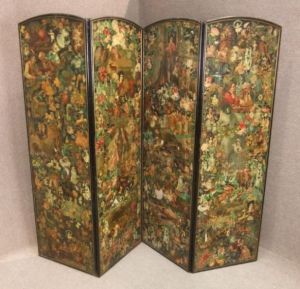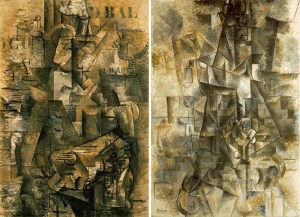ART IN CONTEXT: Cut and Paste – Tearing through Collage: Lecture by James Green
Posted: October 10, 2014 Filed under: SUBJECT, Subject - Contextualisation | Tags: architectural collage, art, art student, art theory, artincontext, artist, artists, assemblage, collage, composition, decollage, fineart, george braque, grayson perry, hannah hoch, inspired, james green, jennifer taylor, joan miro, Kurt Schwitters, lecture, max ernst, memory jugs, mimo rotella, peter blake, picasso, raoul hausmann, sculptural collage, sculpture Leave a commentCollage is the noun from the French ‘Coller’ – Literally “to glue” or “to stick.
There was a lot of imagery and variety of artists work shown to us in this lecture, it was a lot to take in but during the lecture you really felt captured and immersed into the world of collage. When the person giving the lecture is highly animated about the subject that they are talking about it definitely keeps your interest and James is definitely a collage enthusiast.
It started being used as a serious art form about 100 years ago in the form of Victorian layered collages and collage style screens.
In the 1900s – Printmaking techniques were created which enabled an easier production of posters etc. There were no Laws prohibiting people sticking up adverts onto buildings and so buildings in Paris got fly posted like giant collages.
Picasso created one of the first fine art collages in history. Picasso worked with George Braque. Cubism – Collages of different view points being stuck together in a painting. This is evident in Picasso’s, The Accordionist and Braque’s, Le Portugais.
Braque and Picasso were both influenced by collages on the streets. They were being introduced to text and so Letters became introduced in their paintings. They used whatever materials that they could get their hands on as they were poor. They moved form painting to cutting out wallpaper and newspaper and drawing onto it etc. Below is an image of “installation of Papier’s Colles in Picasso’s studio 1912”.
Both Picasso and Braque created still life work with collage elements within them. Picasso’s, Still life with chair caning 1912 is an oil on canvas with a rope around it. It represents a glass table top and combines collage with painting. Braque’s still life on a table 1914 is more tactile and incorporates more materials.
Kurt Schwitters forms in space 1920 is a collage piece. He called his work “merz” which basically means shit. He used bits of rubbish, sweet wrappers/string and to him these materials all had equal right with paint. Schwitters has also made architectural collages and in his original merzbau in his Hanover studio 1923 – he creates and makes a room into a collage piece.
Herbert Read – “Schwitters is the supreme master of collage”.
Another artist that created rooms of a kind of collage is Jennifer Taylor. In her piece, Junk Painted White, she has filled a room with collected artefacts that she has hoarded over the years and painted white.
Hannah Hoch and Raoul Hausmann created Dadaism to reflect the irrational and crazy world around them during the war time. Tatlin at home 1920 collage. Mechanical Head 1919. Here found objects are almost mounted onto a wooden head. This is where a sculptural element becomes added into collage. Surrealism, Cubism and Dadaism were all happening at the same time and all of these movements incorporated collage. Max Ernst created irrational stories through collage. His collages look like they are printed, there are no joins or evidence of different components being stuck together.
Joan Miro – painting 1933. He would collect Victorian catalogues and cut out things, drop them into the floor onto paper and wherever they landed he would stick them . He used collage to make up the composition of the painting that he would do. Joseph Cornell 1903 – 1972 created boxes containing collage that are like a gateway into his mind.
DECOLLAGE – Mimo Rotella un poco in su 1954 – Instead of sticking things on this artist would rip them off which became known as decollage.
Peter Blake is an artist that very much seemed to be favoured by the lecturer. He was particularly interested in the varied elements and collaged areas in his piece Kamikaze. There are many different processes in this piece. Cryla and collage on board, elements stuck on the outside on the piece, combining painting with collage and sculptural or 3D collage. Peter Blake also painted paintings that were made to look like collage but actually contained no collage at all.
Collage – any collection of unrelated things
Eduardo Paolozzi Bunk 1972. Pop Artist that uses collage. From creating collages, Paolozzi went onto sculpture, this is evident in his piece – Cyclops 1958 which is a bronze piece. He has found lots of different objects and cast them and put them together. For example one of the eyes of the creature is a cast wagon wheel.
In relation to this, memory jugs incorporate a collage element. When someone died, others would collect their belongings and make these jugs and paint them as a memory of the person. Grayson Perry’s Tomb of the unknown craftsman also links in here.
James went on to talk about other collage artists and showed us images of their work, he mentioned C.A.A Dellashau, Adolf Wolfli, Martin Ramirez, David Ferry and Richard Gasper. He showed us how collage starts out as a series of unrelated things and then eventually have some kind of connection when it is all together. He referenced Shelly Campbell: Heat 2013 and Ian Wilkin’s work. Lastly, he finished by showing us his own collage work, which was really inspiring, it has encouraged me to think about ways that I may potentially be able to incorporate collage into my own work and that maybe I would like to take his field option based around the process of collaging. Also, this lecture opened my eyes to many artists that I have not previously been exposed to.












Recent Comments